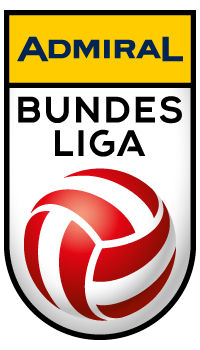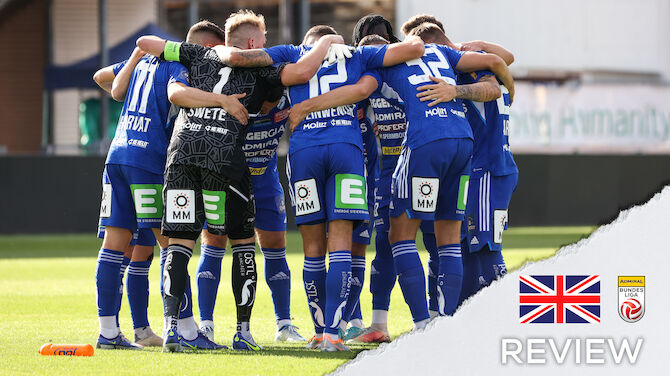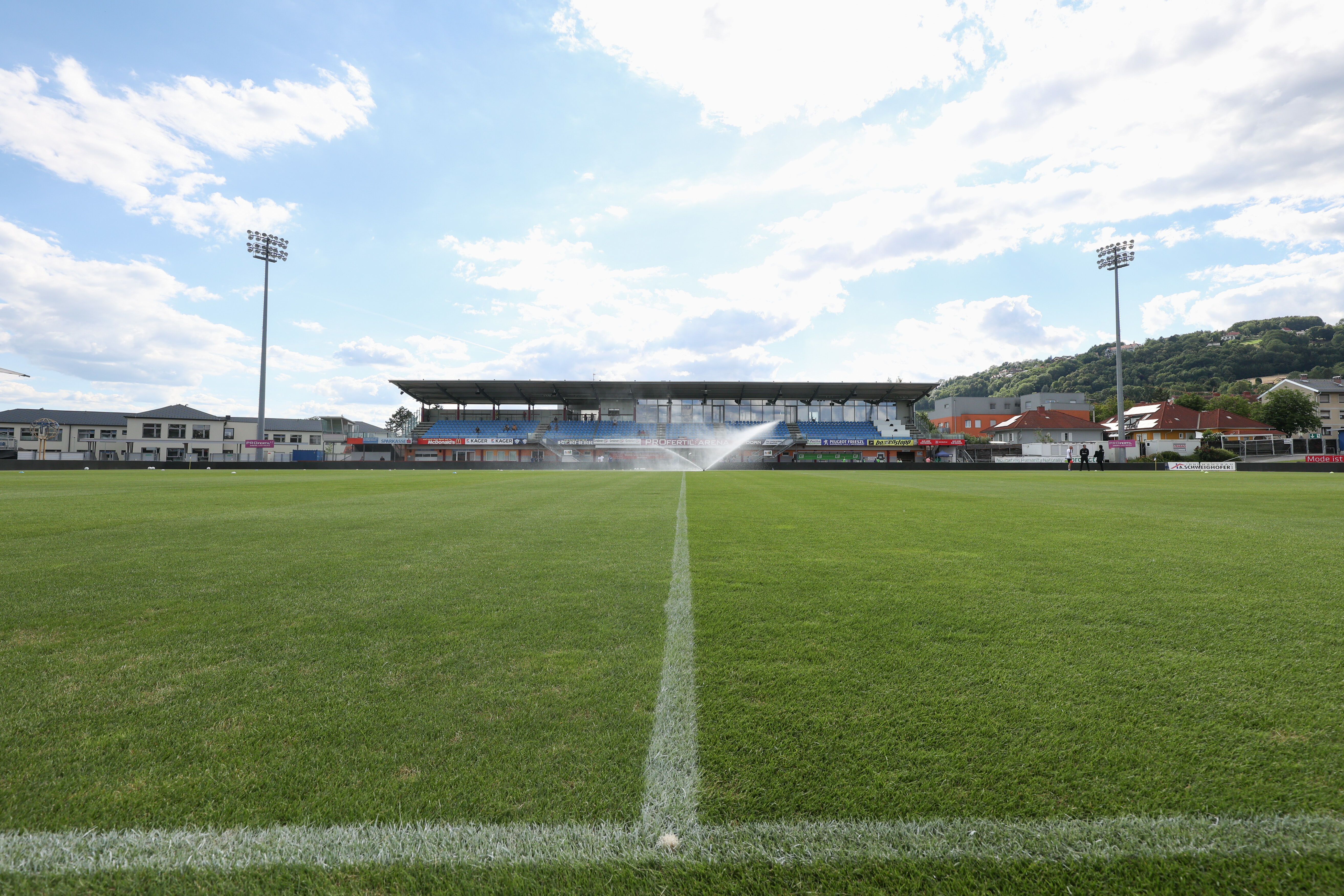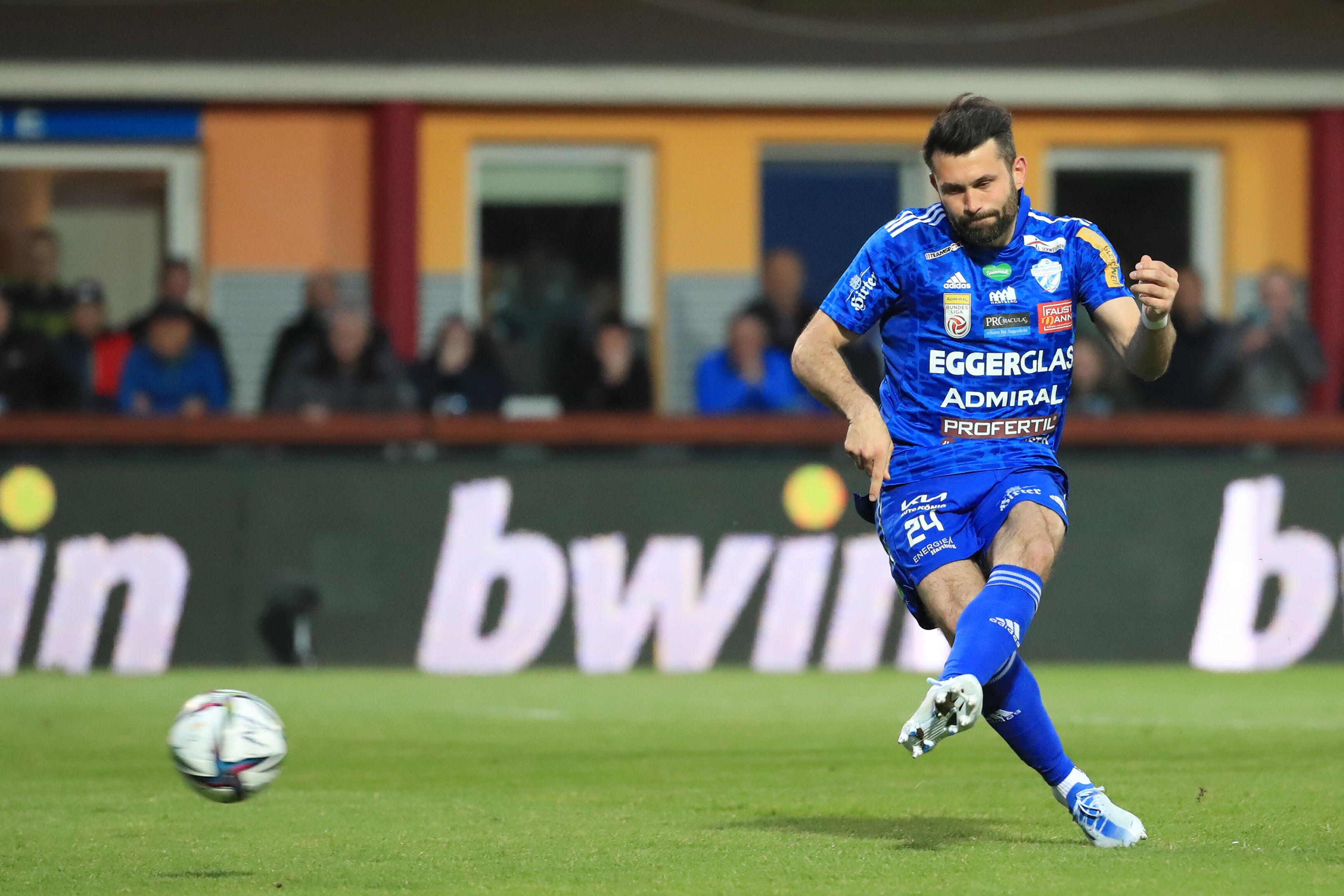Founded: 1946
Home ground: Profertil Arena
Location: Hartberg, Styria
Colours: Blue
Manager: Klaus Schmidt
Website: www.tsv-hartberg-fussball.at
The history:
Founded in the aftermath of the Second World War as a general sports club, TSV Hartberg remained in relative obscurity until they gained promotion to the third-tier Regionalliga Mitte in the mid-1990s. The following two decades were spent yo-yoing between the third and second divisions, before two successive promotions took them up to Austria’s top table for the first time in 2018. Despite having the lowest budget in the Bundesliga, tiny Hartberg have since defied the odds by racking up some famous victories, finishing in the top six in their second season and even venturing onto the European stage too.
Ascent through the divisions
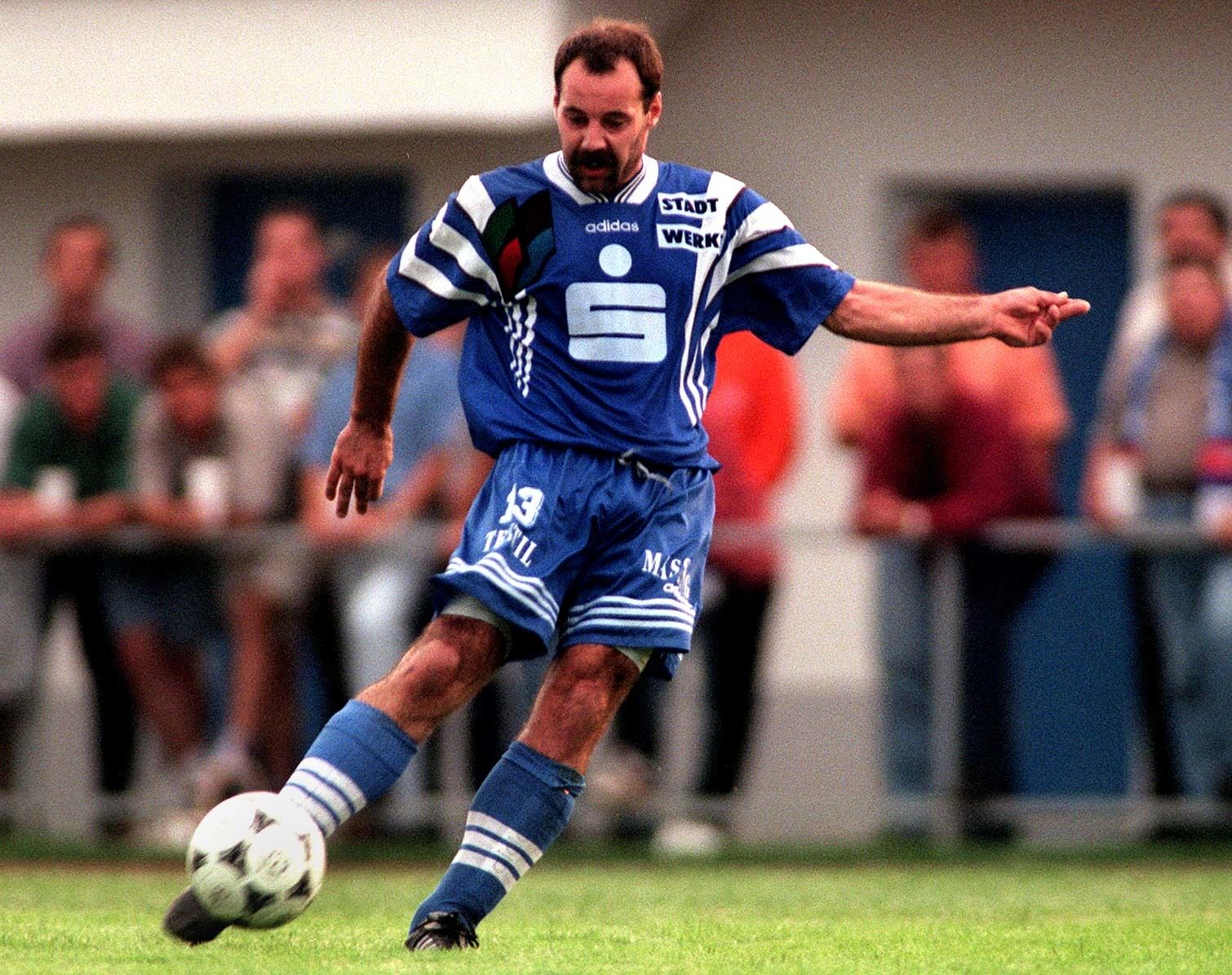
In 1949, three years after its creation as an all-purpose sports club, Hartberg played their first-ever league match in what was then the 1. Klasse Ost. Their promotion to the Unterliga Süd 15 years later marked the start of an ascent through the divisions: the Styrian side went up to the Landesliga in 1978 thanks to their sponsorship with the bank Sparkasse Hartberg, before gaining promotion to the Regionalliga Mitte in 1995 – the same year in which they reached the ÖFB Cup semi-final – and the 2. Division in 1996.
A league reform – the number of participating clubs was reduced to 10 – only two years later in 1998 ultimately cost the club their place in the division. Hartberg spent the best part of the next decade gradually working their way back to where they had been, claiming back-to-back third-places and three consecutive runners-up finishes before eventually securing their return to the second tier with three matches to go in 2006.
The yo-yo years

At this point in their history Hartberg seemed to hit a wall, struggling to establish themselves in the second tier but proving too good for the third division. And so began the yo-yo years: TSV immediately went down to the Regionalliga following an 11th place finish in 2007, but an astute coaching appointment in the form of Bruno Friesenbichler saw them return to the Adeg Erste Liga – as it was then known – two years later in 2009.
Now operating under the name TSV Lopocasport Hartberg, another relegation beckoned in 2011/12 as the Styrians finished down in ninth. But this time the luck was on their side: with LASK refused a license, Hartberg were not automatically relegated and instead went into the play-offs against GAK, whom they beat 3-0 to preserve their second-tier status. They topped off the season with a sensational cup run too, beating state neighbours and then Austrian Bundesliga champions Sturm Graz 4-2 (AET) in the quarter-finals before being narrowly eliminated by Red Bull Salzburg in the semi-final.
Making the impossible possible
Their six-year stay in the second flight came to an end in 2015/16. Other clubs might have disappeared from view at that point – but not Hartberg, who sat top of the Regionalliga Mitte table by the winter. Coach Christian Ilzer then departed for a stint at Wolfsberger AC and Hartberg lost out to BW Linz in the title race, but the following year they went one better as Dario Tadic– the club’s all-time top appearance-maker (177) and goalscorer (75) – fired them to the third-tier title. With Christian Ilzer back in the dugout and 20 local lads from Styria in the squad, Hartberg then achieved a second successive promotion the following season and reached the Bundesliga for the first time.
Promotion was not without its complications, however: Hartberg were initially denied a license in the first two instances and it was only thanks to a successful appeal at the Ständiges Neutrales Schiedsgericht (Neutral Court of Arbitration) that their promotion was eventually rubber-stamped. With only two full-time staff, the divison’s lowest budget, numerous players leaving and major infrastructural changes needed, Hartberg seemed to be facing an impossible task. But an army of volunteers made the impossible possible and on Saturday 28 July 2018, Hartberg played their first-ever top-flight match – a Styrian derby against rivals Sturm Graz.
Mixing it with the big boys
Pundits and fans alike expected the minnows to be the Bundesliga’s whipping boys and head straight back down. But with new coach Markus Schopp in charge, Hartberg recovered from a slow start and put together a five-game winning run that included victories over the likes of Wolfsberg, Rapid and Sturm. They were rewarded with home crowds of almost 3,500 per match (more than half of the village’s 6,500 population), while between 800 and 1,000 supporters followed the Styrians on away days to Graz, Vienna and Mattersburg – a remarkable figure by Austrian Bundesliga standards, but especially for a provincial club like Hartberg.
Hartberg did falter in the Qualification Group but stayed up courtesy of a 3-1 final-day win over Admira. And the best was yet to come. Another winning run in the autumn ensured there would be no second-season syndrome for Hartberg, who finished the regular campaign in sixth spot and qualified for the Championship Round! As if that wasn’t enough, they followed up away wins over league leaders LASK, European participants Wolfsberg and record champions Rapid with a 4-1 victory over Sturm Graz – ensuring they would finish in fifth place, above their local rivals, who were dethroned as Styria’s best club for the first time in 15 years.
A taste of Europe
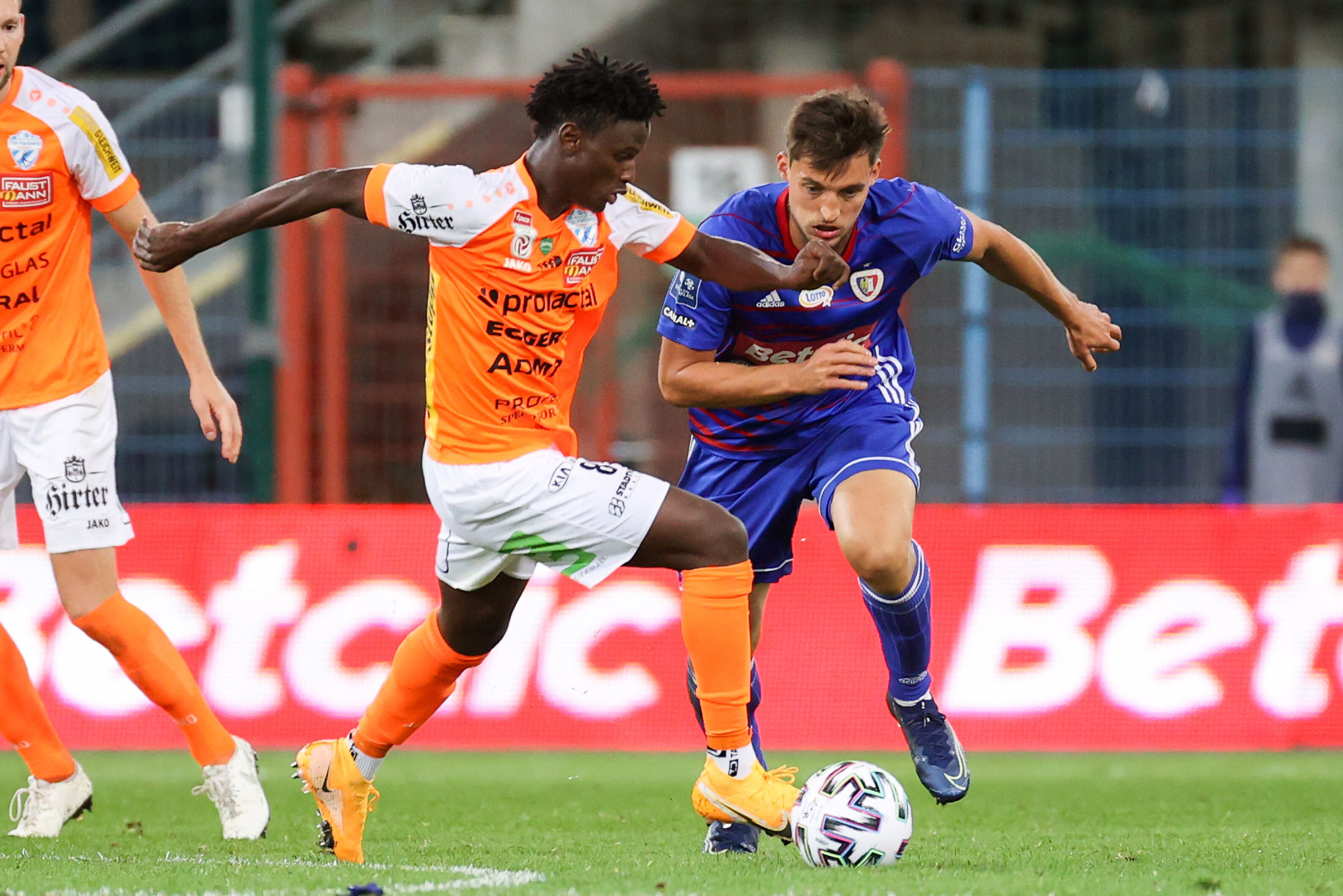
The icing on the cake came as Hartberg beat Austria Vienna in the Bundesliga’s end-of-season play-off to qualify for Europe for the first time. The coronavirus pandemic meant a tricky one-legged Europa League qualifier away to Polish side Piast Gliwice and, despite a spirited showing against the Ekstraklasa side, Hartberg suffered an unlucky 3-2 defeat. Though short-lived, the European adventure marked the culmination of an incredible journey for the Styrian club – from the backwaters of Austrian football to continental competition.
Hartberg have not quite hit those heights since, narrowly missing out on the top six in 2020/21 due to a stoppage-time equaliser from St. Pӧlten on Matchday 22 and only beating the drop on the final day of last season. That drop-off may in part be down to the loss of coach Markus Schopp– he has since been succeeded by Kurt Russ and, more recently, Klaus Schmidt – but the Styrians have still stayed true to their attacking and exciting brand of football, and continue to earn plenty of admirers. They probably won’t be in the Bundesliga forever – but they are determined to enjoy their time at Austria’s top table while they can.
The stadium:
Set against a hilly backdrop, the charming Profertil Arena has been Hartberg’s home ever since the club was founded some eight decades ago. With a total capacity of 5,024, it has been the Bundesliga’s smallest stadium in every one of its five top-flight seasons to date. But that does not mean the venue is in any way lacking compared to its rivals: the Profertil Arena, which has an athletics track around the pitch and four roofed stands, is equipped with modern undersoil heating, three TV towers, a commentary booth, a press sector, a Bundesliga-standard floodlight system and a VIP area that can hold 450 people.
And the matchday atmosphere is a sight to behold too: with charismatic president Brigitte Annerl standing alongside the coaching staff on the sidelines and the crowd determined to enjoy every moment of top-flight action while they can, the Profertil Arena can be a difficult place for opposing teams to go.
The team:
Many of the key players who were behind Hartberg’s rise to the Bundesliga in 2018 have stayed loyal to the club since. There are two prime examples serving at opposite ends of the pitch: goalkeeper Rene Swete has been pivotal between the sticks, making 132 top-tier appearances and keeping 24 clean sheets for the Styrian club, while Dario Tadic’s lethal left foot – he has scored 53 goals in all competitions over the past four seasons – has terrorised defences across the division.
They have added a few experienced heads over the years, too: 35-year-old centre-back Mario Sonnleitner has joined from Rapid Vienna, while fellow defenders Manfred Gollner (31) and Patrick Farkas (29) have arrived from Wolfsberg and Salzburg respectively. But those transfers have ramped up the average age in a squad that was already lacking youth: Hartberg’s average age of 26.4 means they currently have the oldest team in the Bundesliga.
The challenge for coach Klaus Schmidt – formerly of Admira, Mattersburg and Altach – will be to get the best out of that ageing squad. The 54-year-old took charge of the Styrians at the start of the 2021/22 Qualification Round, helping them to end their seven-game streak without a goal and saving them from relegation on the last day of the season. That will surely be the minimum objective next season, as Hartberg look to prolong their five-year stay in the Bundesliga.
Vocabulary
|
English |
Deutsch |
|
yo-yo club |
Fahrstuhlmannschaft |
|
top appearance-maker |
Rekordspieler |
|
rubber-stamp |
bewilligen |
|
mix it with |
sich messen mit |
|
minnow |
Fußballzwerg |
|
whipping boys |
Punktelieferant |
|
second-season syndrome |
oftmals schwierige zweite Saison |
|
dethrone |
entthronen |
|
icing on the cake |
Sahnehäubchen |
|
backwaters |
Randzone |
|
the top table |
die hӧchste Spielklasse |
|
clean sheet |
Zu-Null-Spiele |
|
ramp up |
erhӧhen |
Die Kollegen von "The Other Bundesliga" porträtieren in regelmäßigen Abständen die Klubs der Liga - auf Englisch mit der dazugehörigen Vokabelauswahl. In dieser Serie sind bisher folgende Klubporträts entstanden: SK Austria Klagenfurt, SK Rapid Wien, SK Sturm Graz, LASK, FK Austria Wien, RZ Pellets WAC, FC Red Bull Salzburg, WSG Tirol, SV Guntamatic Ried, FC Flyeralarm Admira
